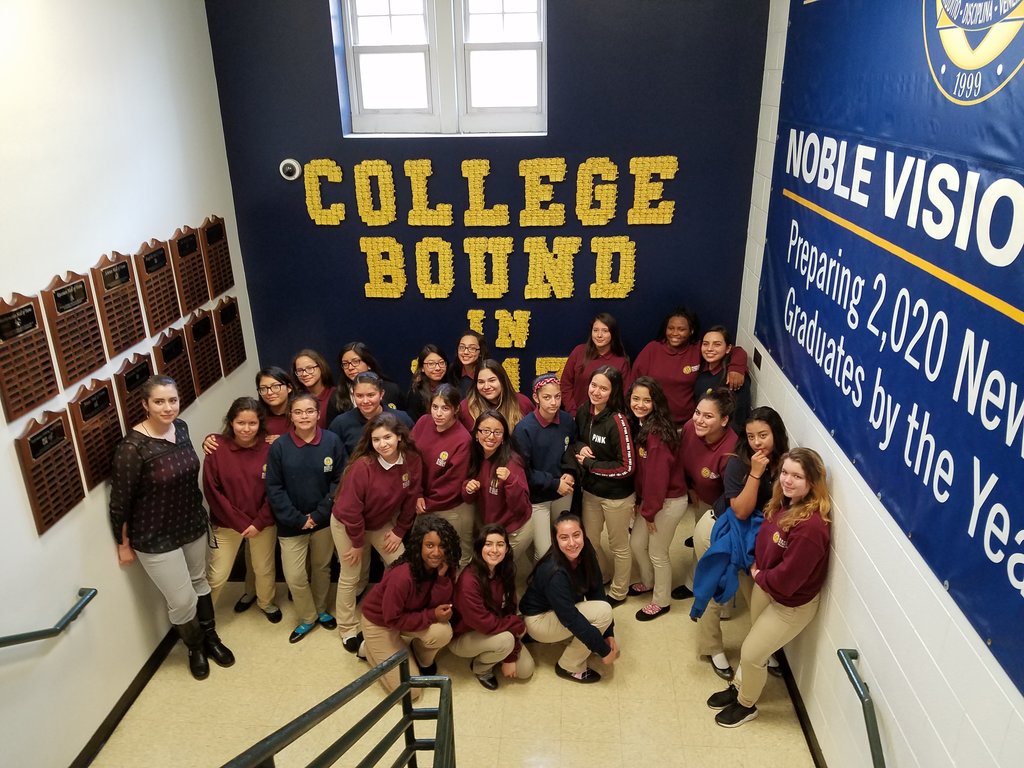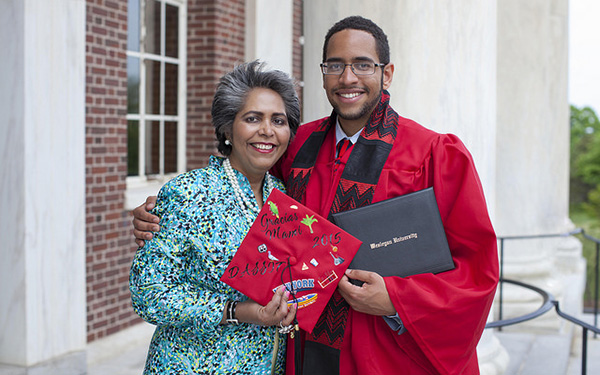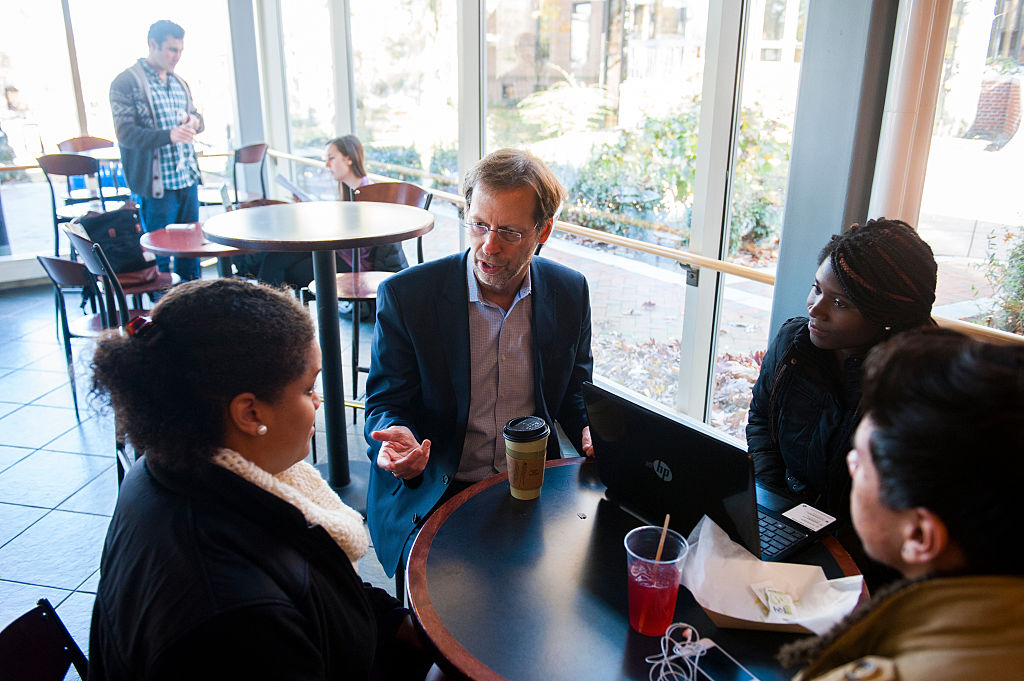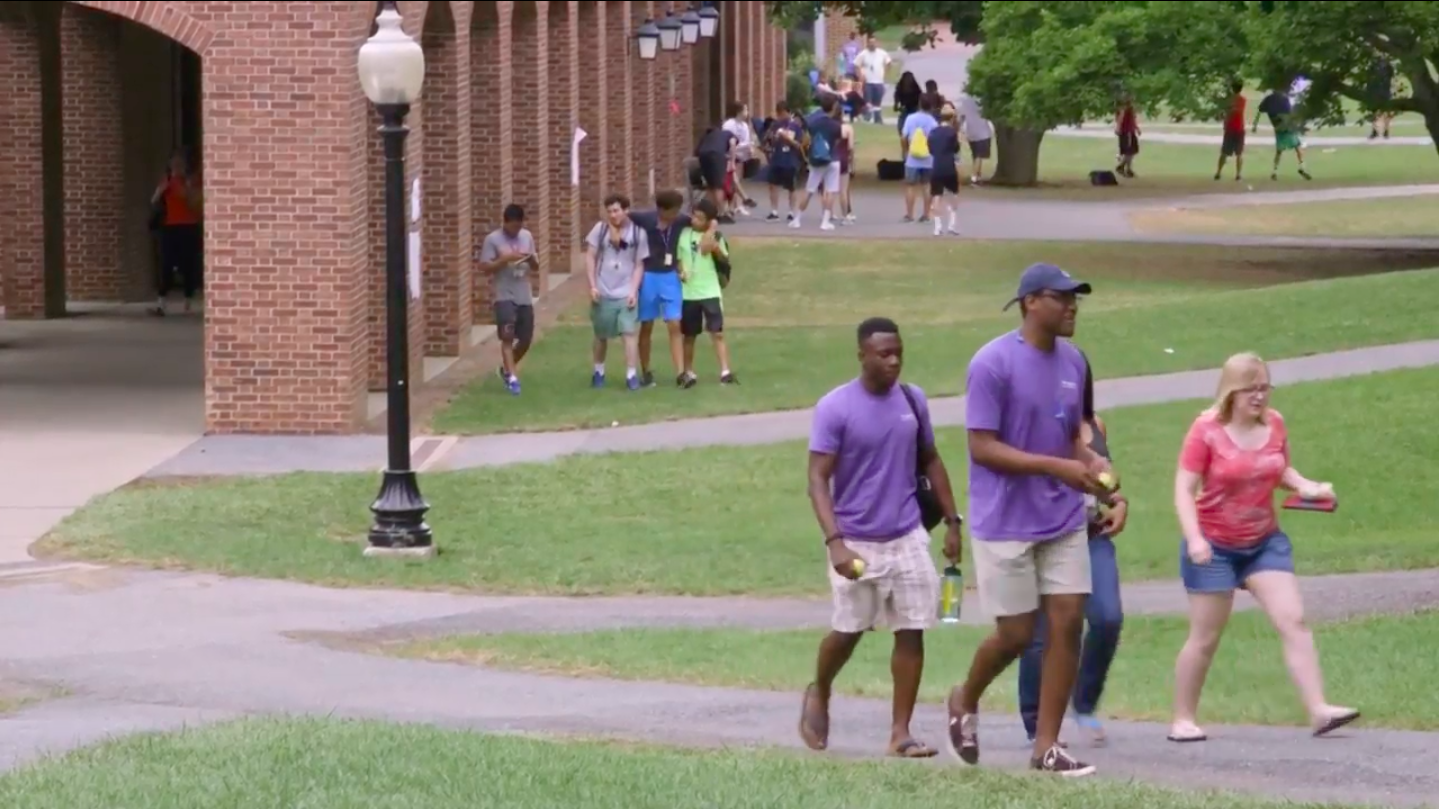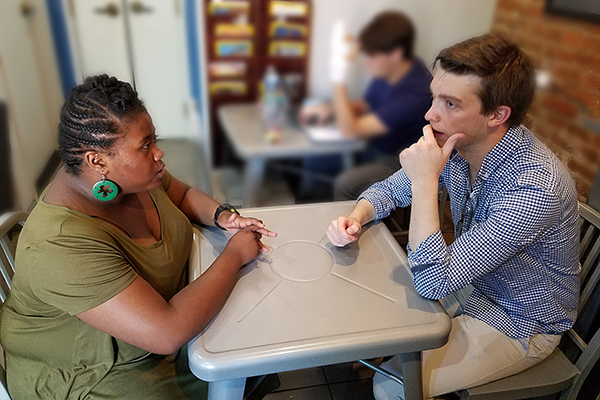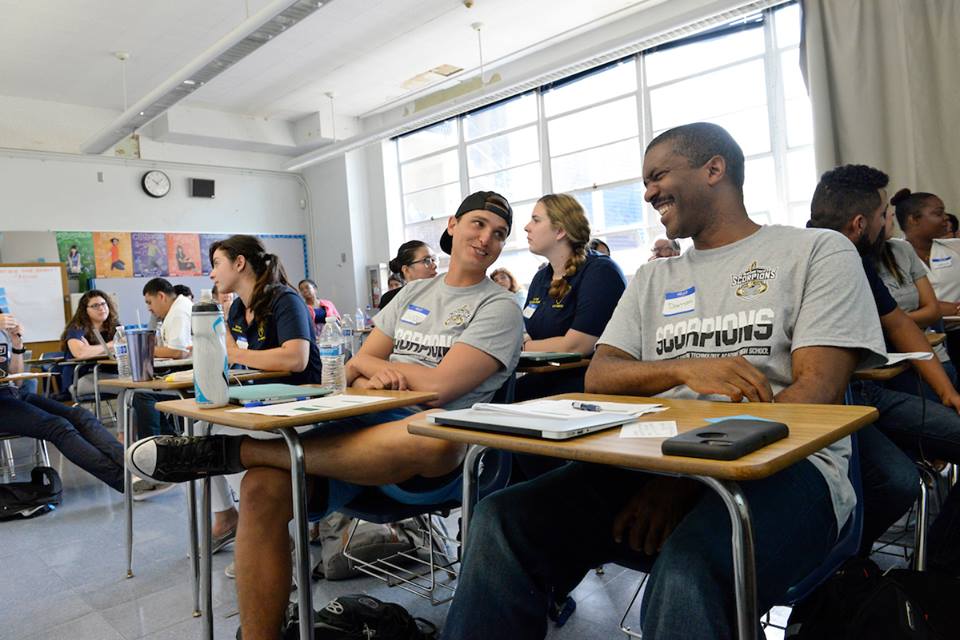Top Charter Networks Worth the Disruption, Set High Accountability Bar for All Public Schools
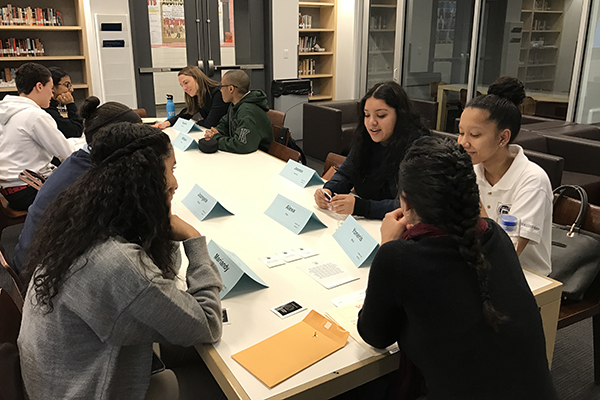
(Photo credit: KIPP)
For the first time in over 20 years, it’s possible to start answering at least some questions about whether charter schools are “worth it.”
Over the past decade, the growth of charter schools has inflicted enormous disruptions on traditional school districts. Superintendents have grown unhappy about losing students and unions have become angry about both student losses and the fact that most charters employ non-union teachers.
That stressful dynamic prompted across-the-country battles over charter schools. In school districts like Los Angeles Unified, where about half the enrollment losses can be traced to charter schools, that fight has become epic, with the teachers union and several board members blaming charters for pushing the district toward bankruptcy.
The disruption is real, but nowhere in these fights does the most important question surface of whether charter schools produce the student outcomes to merit the fight.
The ultimate way to address that is by measuring their bottom-line promise: To ensure that more low-income, minority students actually win bachelor’s degrees.
Overall, the big charter networks are seeing college success rates that are anywhere from three to five times the rates for low-income students nationally. The most successful networks are all in the 50 percent range — half of their alumni earn bachelor’s degrees within six years. Nationally, 9 percent of the students from low-income families meet that mark.
Perhaps more interesting are some of the rapid improvements. Uncommon Schools projects that within a few years its success rate could rise as high as 80 percent, the rate for students coming from high-income families.
All this needs some perspective. For this project we focused on the big charter management organizations, mostly because these are the only schools with a large enough pool of alumni more than six years past high school graduation to measure college success.
But it is important to note that that does ignore all kinds of awful charters, mostly for-profit or digital schools, that should be shuttered immediately.
This project’s findings do not add up to an argument for expanding all charters. Rather, they are an argument for careful expansion of the top performers. Clearly, these college success rates justify their creation and growth.
More importantly, the findings are an argument for traditional school districts to form collaborations with charters on college success efforts, as we already see happening in Texas. Collaborations just on college success programs sidestep the thorny issues that arise in the K-12 grades when charters and districts compete for students. In this case, all the effort gets directed at alumni. Nobody loses students; nobody loses funding.
College success collaborations are a clear win-win for both sides.
What these charter networks are beginning to master — winning college degrees for low-income and minority students — has mostly eluded traditional educators. Just when educators think they have it figured out, everything seems to fall apart.
Among traditional schools, there’s little in place to fix this. Chicago Mayor Rahm Emanuel will soon impose a graduation requirement that all students offer proof of a future plan — a college acceptance letter, evidence of job, a trade apprenticeship, or military enlistment. But as this project makes clear, ensuring future success for low-income minority students requires far more, from rigorous pre-graduation coursework to post-graduation tracking.
Many people assume that college success for first-generation students is all about funding. It’s far more than that. In New York, it appears that Gov. Andrew Cuomo’s “free college” initiative will fall far short of solving this problem.
In many states, awareness of the challenge — the first step — seems minimal. As Achieve documented, many states report their college graduation data in a way that makes graduation inequities mostly invisible.
Every month, it seems, another report emerges that documents the college preparedness deficiencies found among these students. The latest, from ACT, concludes that only 9 percent of low-income, minority students in the class of 2017 — students whose parents did not go to college — are strongly ready for college.
Ominously, this string of failures has prompted a growing sense of defeatism that maybe college isn’t for everyone.
But now we know that these charter networks, the same networks that seemed to have cracked at least some of the code about what it takes to boost academic performance, have figured out at least some ways to lead more low-income, first-generation students to earning four-year college degrees.
None of the objections raised by charter critics — selection bias, taking too few special education students, encouraging dropouts — can account for an effect size of that magnitude. In fact, this college success refutes many of the objections raised about charters, that they succeed only because they “cream” students (because parents must apply, presumably the more motivated parents) or push out bad students.
If that were the case, these networks would have posted lofty college success rates from the beginning. But they didn’t. Networks like KIPP, which assumed that broad college success would flow naturally, had to dig deep and launch new programs when it realized that wasn’t happening.
As we document in The Alumni, the West Coast charter networks — that for funding reasons were tardy in devising college success programs — now post success rates half those found in East Coast charters that began this process a decade ago.
Regardless of college success figures, there wasn’t a single charter leader interviewed for this project who expressed satisfaction with current rates. Rather, they all laid out ambitious plans to continue boosting college success. But most fair-minded outsiders — those not actively engaged in the bitter charter-district-union battles — would likely conclude that the disruption appears to be paying off in student outcomes.
For a traditional school district or charter network that’s new to the college success endeavor, there are lessons learned from the wins that major charter networks have seen thus far. Some highlights:
KIPP Through College is probably the most advanced of any network.
That’s not surprising, given that KIPP was the first to take on this goal and has the deepest philanthropy pockets to carry it off. It’s important to view KTC — probably too expensive for most networks — as a research project: What works that others should imitate?
New York’s KIPP College Prep was a highlight on my tour of eight charter networks across the country. The thoroughness, precision, and coordination between the high school college counselors and the KTC team was impressive.Most striking was the sticky tracking system overseen by the college counselors there. Never did they miss a single student financial or academic record records that prove crucial in the intricate dance required to match students with the right college and the right financial aid project. It’s not cheap -— $2,000 per student in the New York City area — but it hums.
Uncommon Schools has always seemed, at least to me, the most cerebral of the bunch.
You could see that in action at North Star Academy in Newark, N.J. Uncommon has college-tracking operations similar to KIPP’s, but nothing that elaborate. Several years ago, Uncommon concluded that intensive college monitoring would be impractical as its alumni base expanded, and switched its emphasis to the K-12 operations, specifically grades 5-12.
Uncommon assessed its science curriculum, found it lacking, and made some unique adjustments, drawing on the “need” of nearby universities to demonstrate local impact as a condition of receiving national research grants. What’s more local than some charter high schools in high-poverty neighborhoods?
While many would like to move away from referencing the SAT as a key to college success, Uncommon looked at the data and concluded it needed to embrace the test. So it created multiple sessions designed to boost those scores. Most interestingly, Uncommon settled on boosting much-scoffed-at grade point averages (which critics argue is a subjective number contingent on the rigor of the courses taken) as a key to college success. The lessons-learned in boosting high school GPAs, it turns out, are the same lessons for college success.
College selection as an art form is a big part of the college success programs at multiple networks.
I liked the sophistication I saw in Chicago at the Noble Network of Charter Schools. For any charter school, placing seniors with good GPAs and SAT scores is no problem. There are lots of universities looking for inner city students like that, and they are willing to give them near-full rides to attend.
The trickier problem is planning the futures of the lesser academic stars, the students that in the past ended up in community colleges — where odds of winning a four-year degree are in the single digits — or a sprawling commuter university, where the odds are roughly 15 percent. For those students, Noble has a plan — pathways that boost the odds of earning a four-year degree to around 40 percent.
By far the most interesting strategy adopted by most networks is taking advantage of the many small, rural colleges — colleges with stellar academic reputations — that are hungry to diversify their freshmen classes. For these colleges, well-prepared urban students are a gold mine. And the charter networks return the love. Where else do they find colleges willing to offer full rides and graduation rates in the mid-90 percent range?
Yes, “survival training” is needed to ensure their graduates can make it in a predominantly white institution, but the effort is worth it. And as these colleges build up their minority student populations, the need for survival training diminishes.
In many ways, low-budget college success programs ended up impressing me as much as the sophisticated programs.
At charter networks like Green Dot Public Schools and Alliance College-Ready Public Schools, the push to raise college success rates is both recent and designed with cost in mind. Staffing counselors and college-tracking teams at graduates, is a huge financial undertaking, especially as the number of graduates grows.
In years past, those initiatives would have largely been unthinkable to traditional school districts that must answer to school boards that may prioritize school librarian salaries over paying for National Student Clearinghouse data to track graduates. Thus, the lessons learned from college success programs at charter networks such as Alliance and Green Dot could prove to be very helpful and approachable for traditional districts considering an alumni tracking program..
Especially encouraging are the software programs the charter networks are developing to reach students in ways they prefer to be reached.
These methods mostly involve social media to “prompt” action on the many important crossroads of their endeavors — everything from financial aid deadlines to cutoffs for adding and dropping college courses. The charter networks appear eager to share, should they come across partners, either traditional districts or other charter networks, wanting to share.
While the gains these charters are making in college success are important, the real paradigm shift, and it’s a big one, is this: The top charter networks, almost unnoticed, have set a new accountability bar. Judge us, they say, on the number of our alumni who go on to earn bachelor’s degrees.
In doing so, all those other accountability measures we’ve heard about years — test score boosts, high school graduation rates, AP exams taken, college admittances — got downgraded. Like it or not, college has become the new high school, almost regardless of the chosen professions.
That’s radical. It’s virtually unheard of that a traditional school district would seek that level of accountability — to be judged on its high school graduates’ college success — much less just track its graduates beyond self-reported college admittances. Less than a handful of districts are committing to this goal.
Maybe more traditional districts should start trying. These charters are eager to pass along their lessons-learned. What KIPP or Uncommon or Achievement First or YES Prep is doing today is something any school district is capable of doing, should districts take on the college success challenge normally left to colleges — institutions that, with some notable exceptions, have failed us on these issues.
If these college graduation rates hold up, and improve, the civil rights implications become profound.
Charter schools, or at least the top networks, seem to be worth the disruption.
Your Alumni
Story Here
We Recommend
-
Noble Network of Charter Schools: It’s Not Just About Going to College, It’s Also About Leaving to Learn Outside Chicago
-
King & Peiser: College Completion — Charter Schools as Laboratories
-
Q&A With UNCF CEO Michael Lomax: We’ve Got to Garner More Resources for Low-Income Kids for This Journey “To and Through” College
-
Gilchrist: My Charter School Saved My Life
-
Exclusive: Data Show Charter School Students Graduating From College at Three to Five Times National Average
-
WATCH: At Newark’s North Star Academy, 100% of the Class of 2017 Is Going to College
-
WATCH – The Alumni Tell Their Stories: College Gave Jadah Quick Upward Mobility
-
The Data Behind The Alumni: Unbundling Facts, Figures, and Caveats


